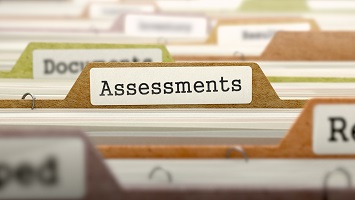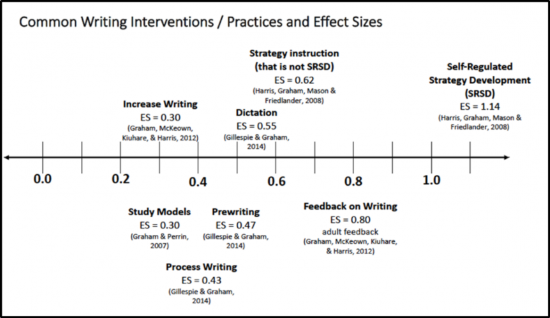
The implementation of evidence-based practices (EBPs) is critical to achieving academic, social-emotional, and lifelong success of students with disabilities (Odom et al., 2005). EBPs found effective for students with disabilities have been identified and disseminated yet, similar to other human services fields, suffer “wicked problems of implementation” (Cook & Odom, 2013). Hudson and colleagues (2016) sought to gain a more contextual and ecological lens on understanding teacher interpretation and implementation of EBPs by building on the foundations of (a) Implementation Science (i.e., Fixsen, Blase, Metz, & Van Dyke, 2013); (b) ecological human behavior studies (i.e., Marx, 1888; Lewin, 1951; Bronfenbrenner, 1979); and (c) sociocultural perspectives that shape professional learning and practice (i.e., Vygotsky, 1978; Scribner, 1997; Billet, 2006). Hudson and colleagues interviewed 27 special education teachers and directors of special education across four large Seattle-area school districts. Their three hypotheses are presented below, and followed each by brief summaries of the findings.
Hypothesis 1: Educator beliefs about the value and relevance of EBPs are shaped by the affordances and constraints of the tools and resources they use for decision making.
- Informants were skeptical about the relevance of research for local decision making. This view was most prevalent among teachers in self-contained classes and teachers of students with low-incidence disabilities; e.g. “research on kids like ours doesn’t exist” (Hudson et al., 2016, p. 33).
Hypothesis 2: Educator access to relevant tools and resources is affected by the position they occupy within the school district.
- Teachers in self-contained classes identified themselves as having little access to resources and professional development on EBPs for students with low-incidence disabilities.
- Teachers who worked more closely with general education teachers identified having greater access to resources. This was accompanied by greater tension between general education mandates and what teachers viewed as necessary for their students.
Hypothesis 3: How educators define EBPs affects how they interpret the value and relevance of tools and other organizational resources available to them related to EBPs.
- Most educators defined EBPs as prescriptions for practice decided by external authorities. Informants were described as “expressing ambivalence, and often downright skepticism about the value of EBPs for their work” (Hudson et al., 2016, p. 34).
- A few educators saw EBPs as a resource for decisions in the classroom rather than a prescriptive practice.
In reviewing these findings, Hudson and colleagues (2016) posit that the “wicked problems of implementation” might be better understood through learning how both individual and collective dimensions of professional practice create and sustain one another (Hudson et al., 2016; as cited in Nicolini, Gherardi, & Yanow, 2003; Peck, Galluci, Sloan, & Lippincott, 2009). They suggest a broader social process, in which practitioners are active in the collective, organizational decisions about EBPs, might be one approach to increasing teacher acceptance and implementation of evidence-based practices that improve student outcomes.
References
Cook, B. G., & Odom, S. L. (2013). Evidence-based practices and implementation science in special education: Some practical considerations. Intervention in School and Clinic, 44, 69-75.
Hudson, R. F., Davis, C. A., Blum, G., Greenway, R., Hackett, J., Kidwell, J., .& Peck, C. A. (2016). A socio-cultural analysis of practitioner perspective on implementation of evidence-based practice in special education. The Journal of Special Education, 50(1), 27-36.
Odom, S. L., Brantlinger, E., Gersten, R., Horner, R. H., Thompson, B., & Harris, K. R. (2005). Research in special education: Scientific methods and evidence-based practices. Exceptional Children, 71, 137-148.


 Data-Driven Decision-Making
Data-Driven Decision-Making  Increasing Post-School Success through Interagency Collaboration
Increasing Post-School Success through Interagency Collaboration  How Can We Improve Deeper Learning for Students with Disabilities?
How Can We Improve Deeper Learning for Students with Disabilities?  Positive Classroom Management: Creating an Environment for Learning
Positive Classroom Management: Creating an Environment for Learning  Self-Determination Skills Empower Students of All Ages
Self-Determination Skills Empower Students of All Ages  Fidelity of Implementation: What is it and Why does it Matter?
Fidelity of Implementation: What is it and Why does it Matter?  Rethinking Classroom Assessment
Rethinking Classroom Assessment  A Three-Step Approach to Identifying Developmentally Appropriate Practices
A Three-Step Approach to Identifying Developmentally Appropriate Practices  Transforming Evidence-Based Practices into Usable Innovations: A Case Study with SRSD
Transforming Evidence-Based Practices into Usable Innovations: A Case Study with SRSD